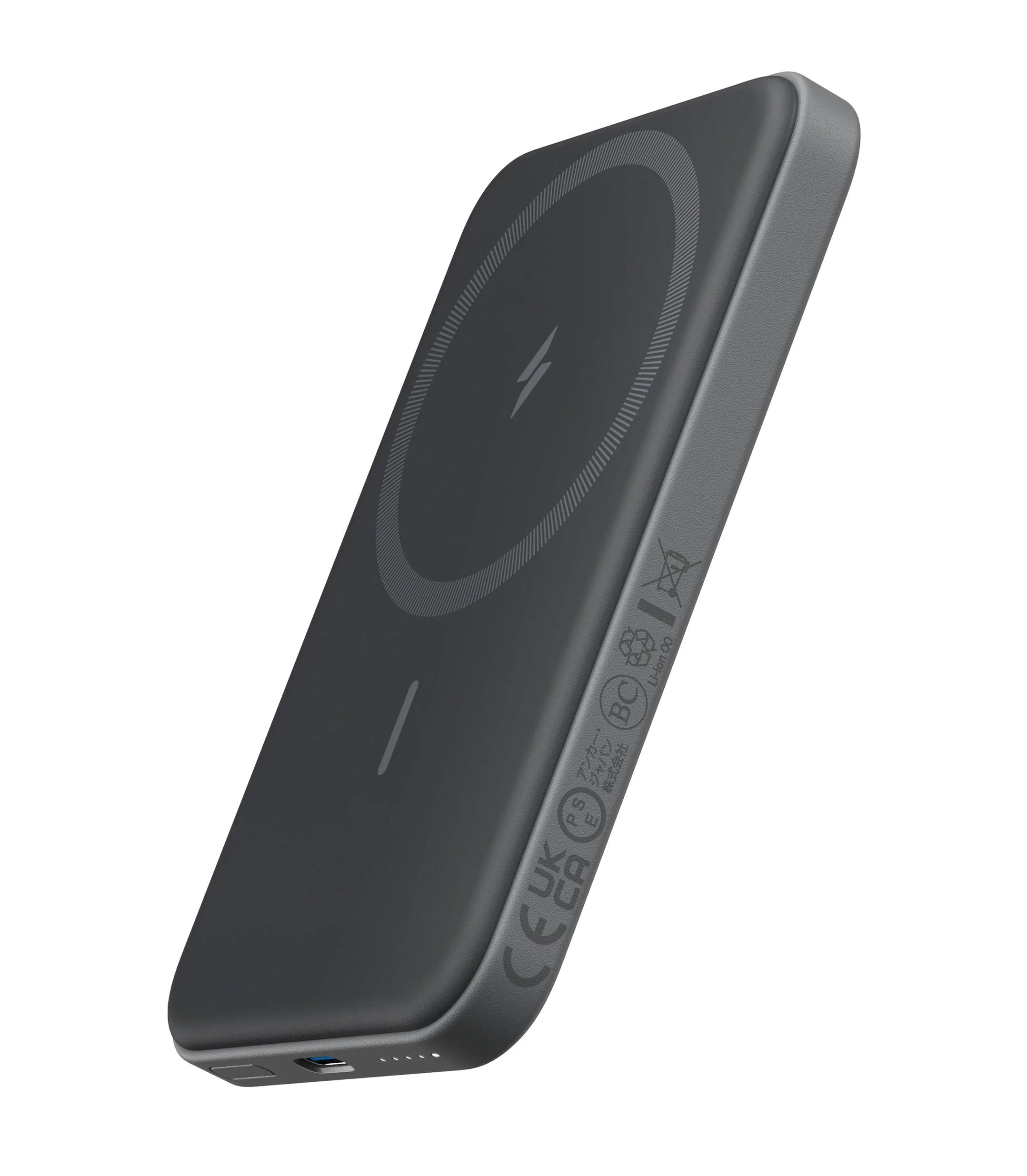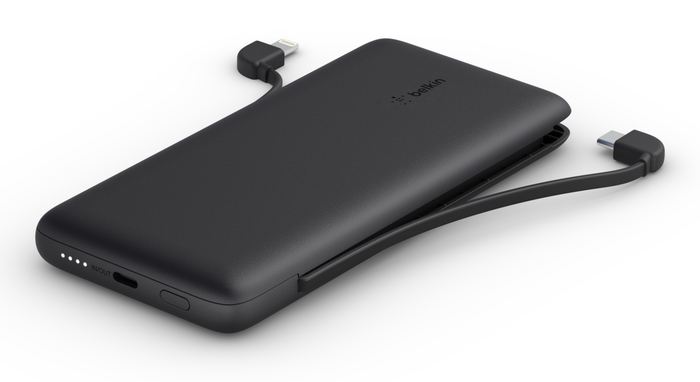How to keep all your Apple devices charged on the go
Posted on
by
Kirk McElhearn
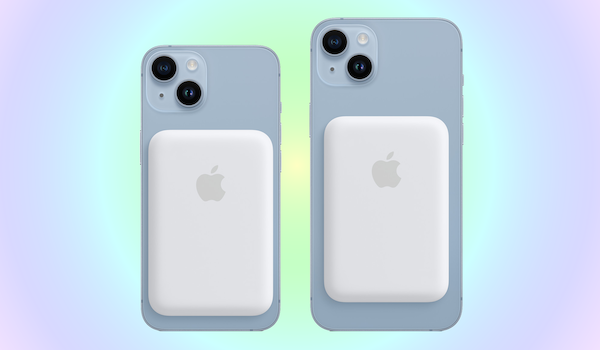
Power is essential for your mobile devices. When their batteries run out, you either need to charge them or you can no longer use them. And when you’re on the road, it’s especially important to ensure that your devices won’t run out of juice, because you may not be able to plug them into power outlets anytime soon.
In this article, we’ll take a look at portable battery packs that you can use to charge all your Apple mobile devices: your iPhone, iPad, Apple Watch, AirPods, Beats headphones, and even your MacBook.
In this article:
- How is battery life measured?
- What are portable battery packs?
- Battery packs to charge your Apple devices on the go
- How can I learn more?
How is battery life measured?
Battery life for mobile devices is measured in two ways. The first is the number of hours that a device can work, according to the manufacturer’s specifications. For example, the basic iPhone 14 offers video playback of “up to 20 hours,” and audio playback of “up to 80 hours.” These vague estimates of battery life are based on very specific settings on the device, with certain features activated, brightness at a certain level, and more.
You probably find that your iPhone’s battery doesn’t last 20 hours. The tasks you perform are different from those in Apple’s test suite, and you may have your iPhone brighter than they did in their test, because, well, you need to see what’s on the screen.
The second way battery life is measured is by the capacity of the battery in milliampere/hours, or mAh. Apple doesn’t specify the capacity of its batteries, but third parties test Apple devices and publish their results. DXOMARK tested the iPhone 14 Pro and found that its battery’s capacity was 3,200 mAh. MacRumors found battery capacity information in a Chinese regulatory database, confirming these test results. The mAh capacity of a battery offers minimal guidance about how long it lasts, but can help you determine what sort of portable battery pack you need to partially or fully charge them.
What are portable battery packs?
Portable battery packs are pocket-sized devices that contain large lithium-ion (Li-ion) batteries. They generally have one or more USB ports so you can plug devices into them, and many have a separate USB port to charge them. You can attach a USB* to Lightning cable to charge an iPhone or AirPods, or a USB* to USB-C cable to charge most Beats headphones. (*Depending on the battery pack, it may have USB Type A or USB-C ports, or both.) You can also use this type of battery pack to charge non-Apple devices, as long as you have the appropriate cable.
Some battery packs provide the equivalent of several days’ charge for an iPhone, while others are more limited. Apple sells a MagSafe Battery Pack, and they say that it will provide, for example, “Up to 60% additional charge” with the iPhone 14, and between 40% to 70% for other models, depending on their internal battery capacity. This means that this battery pack will not provide a full charge to an iPhone. This makes sense given the relatively small size of the pack compared to these phones.
Portable battery packs are rated in mAh, but also in Wh, or watt hours. This latter figure is more important, because they take into account the voltage at which the battery pack can charge a device. Unfortunately, Apple doesn’t specify either mAh or Wh for their battery pack, so you have to search to find the numbers: 1,460 mAh and 11.13 Wh. These values allows you to compare Apple’s product with other devices.
In short, the numbers that you see — generally mAh for battery packs — don’t always tell the whole story. But at the same time, you probably don’t need to worry too much about precise numbers.
Battery packs to charge your Apple devices on the go
Note that these are NOT paid product placements, and the companies below are NOT sponsors of Intego or this blog; these are just some popular options from Apple and other well-known brands.
MagSafe battery packs for iPhones
If you just need a bump for your iPhone on long days, Apple’s MagSafe Battery Pack is a great option. It’s more expensive than the competition, but it’s also slimmer and lighter, at 112g. It integrates well with iOS, with a visible indicator on screen when you connect it. The Battery widget on the iPhone shows its current charge so you know how much longer it will last. It also supports fast charging when connected to a 27W or higher power adapter.
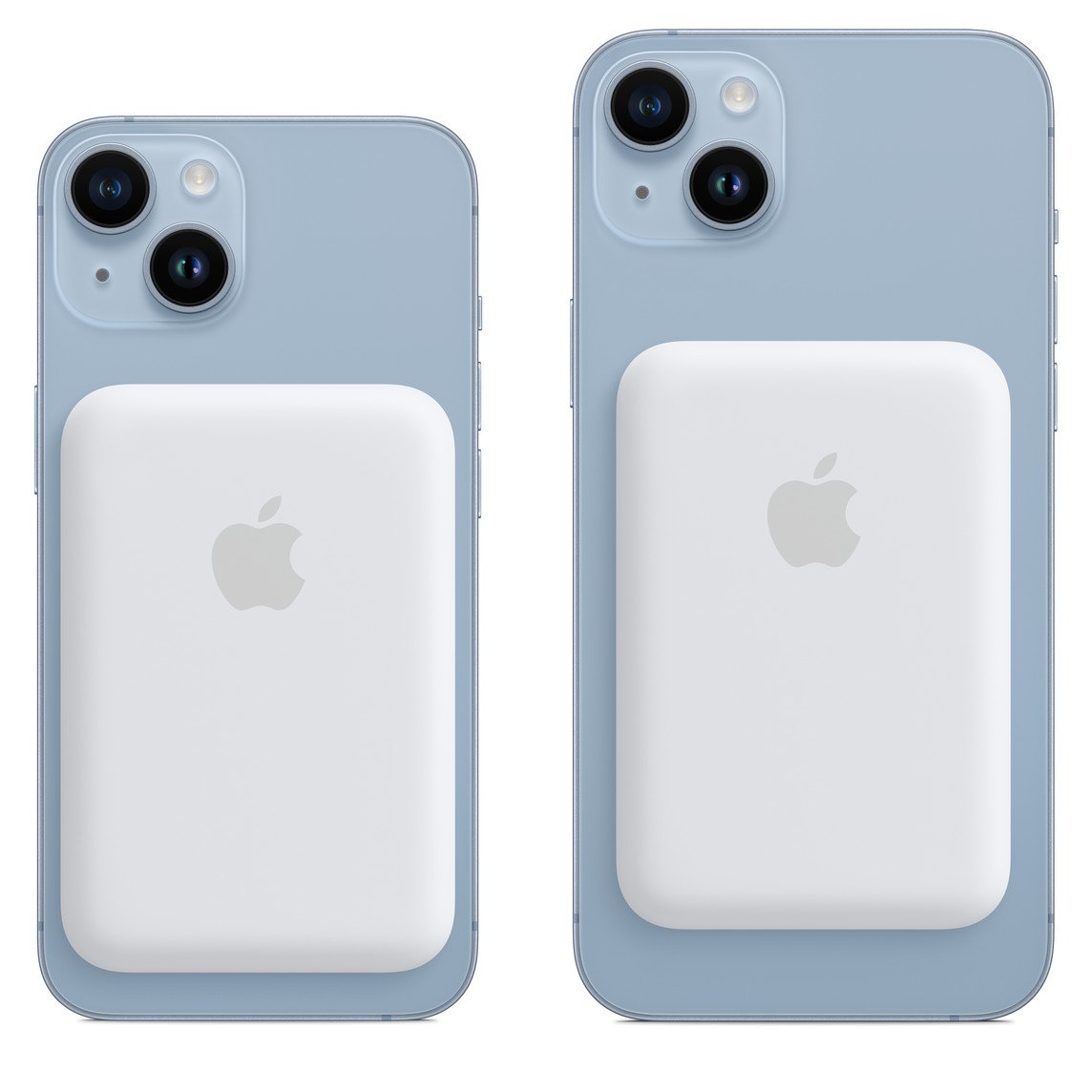
Anker sells magnetic battery packs that are half the price of Apple’s, or even less. Its 5,000 mAh Magnetic Battery (MagGo) weighs 140g, and offers 19.25 Wh. Meanwhile, Anker’s 10,000 mAw battery pack weighs 218g. The increased size and weight may be a deal-breaker, but if you need lots of extra power for all-day or multi-day excursions, then you might want to opt for one of these.
Non-MagSafe options, including for MacBooks and iPads
Most portable battery packs aren’t MagSafe: they are just big, dumb batteries, which is fine for most uses. The Mophie Powerstation Pro, which Apple sells, is a 20,000 mAh battery pack with two USB-C ports. It can charge two devices at the same time, with the appropriate cables, and it can also fast charge at up to 45W, for Apple devices that support this. Apple says that it provides more than 8 hours of charge for a MacBook, and more than 72 hours of charge for iPhones. Heavy-duty chargers are also ideal for charging iPads as well. Apple sells several devices in this product line, ranging from 5,000 mAh to 25,000 mAh. If you want to be able to charge a laptop on the go, you should get the battery pack with the highest number of mAh.
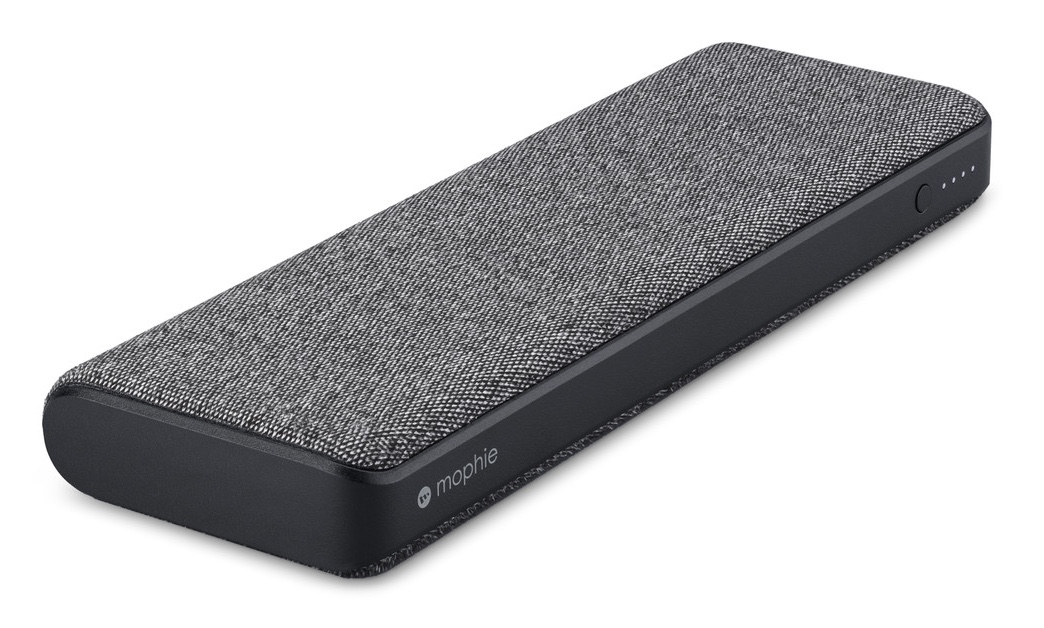
One practical device is Belkin’s Boost Charge Plus, a 10,000 mAh battery pack with integrated USB-C and Lightning cables. With this device, you don’t have to worry about having cables, as they fold into the device.
Be cautious about off-brand chargers
Amazon is full of portable battery packs, and you can get a 10,000 mAh battery pack for around $20 these days. It’s tempting to choose the cheapest ones, but they may be limited in the number of devices they can charge, and how fast they can charge and be charged.
I’ve had cheap battery packs that take a long time to recharge, often overnight, and that means they’re not ready when you need to use them.
You may also want to steer clear of off-brands, or bizarrely named brands you’ve never heard of, which might be knock-offs or lower-quality products. In theory, these could potentially damage your Apple devices, so be cautious.
Don’t forget about your Apple Watch
With more Apple devices using “wireless charging” (also known as inductive charging, or Qi charging), cables alone won’t let you charge all your devices. It’s a good idea to keep Apple’s MagSafe charging disc with you when you’re on the road, to charge your iPhone and AirPods, and have an Apple Watch charging disc as well, if you have that device. Or think of using Apple’s hybrid MagSafe Duo Charger that charges your iPhone, AirPods, and Apple Watch — though only your watch and one other device at the same time. Note that the MagSafe Duo does not contain a battery pack of its own, but it can be plugged into a portable battery pack that has a USB-C port.
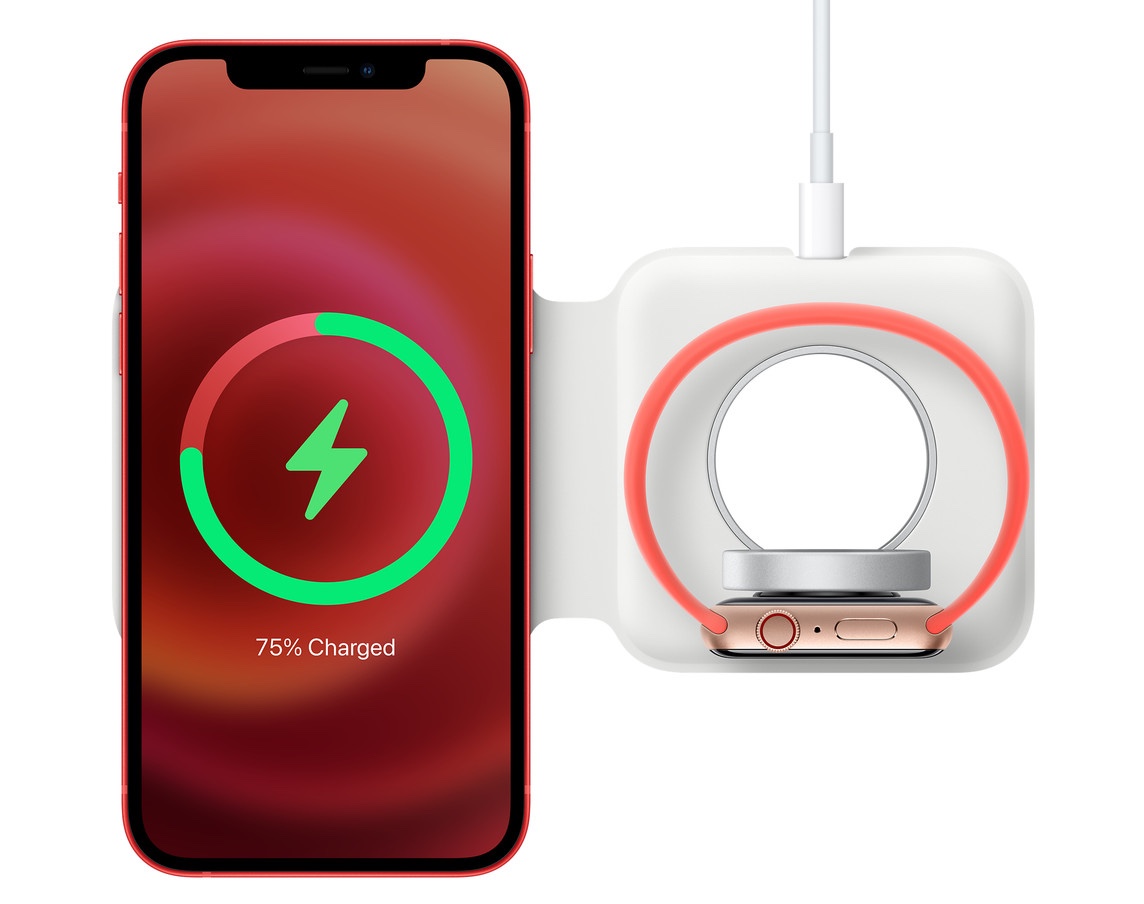
For more on MagSafe charging, see The Complete Guide to Apple MagSafe Chargers, Cases, and Accessories.
The Complete Guide to Apple MagSafe Chargers, Cases, and Accessories
Having a portable battery pack is essential for when you are on the go and want to ensure your devices don’t run out of power. There are many options available, and it’s important to consider the capacity, weight, and charging speed of battery packs to pick the best one for you.
How can I learn more?
 Each week on the Intego Mac Podcast, Intego’s Mac security experts discuss the latest Apple news, including security and privacy stories, and offer practical advice on getting the most out of your Apple devices. Be sure to follow the podcast to make sure you don’t miss any episodes.
Each week on the Intego Mac Podcast, Intego’s Mac security experts discuss the latest Apple news, including security and privacy stories, and offer practical advice on getting the most out of your Apple devices. Be sure to follow the podcast to make sure you don’t miss any episodes.
You can also subscribe to our e-mail newsletter and keep an eye here on The Mac Security Blog for the latest Apple security and privacy news. And don’t forget to follow Intego on your favorite social media channels: ![]()
![]()
![]()
![]()
![]()
![]()
![]()
